What is it about Croatia that attracts tens of thousands of vacationers every year? Perhaps it’s the deep-blue Mediterranean waters. Maybe it’s the diverse architecture of cities like Dubrovnik and Istria-Pula. Whatever the reason, in recent years Croatia has blossomed into one of the most highly desirable vacation-destinations in Europe. As increasing numbers of travelers explore Croatia, some will want to return year after year. Because vacationer’s desire to see this beautiful country again and again is steadily growing, many frequent travelers to Croatia have decided to buy timeshare there so that they will never have to concern themselves with finding appropriate, economical lodgings every time they return.
Croatia is a well-developed country in the southern Europe next to the northeast Adriatic coast. Its rich coastline brings a lot of income to the country especially during summer that attracts over 10 million of tourists each year. With that, the country generates over seven billion euros that made it ranked as eighteenth of the most popular tourist destinations in the world. Zagreb is the capital of Croatia that has a lot to offer.
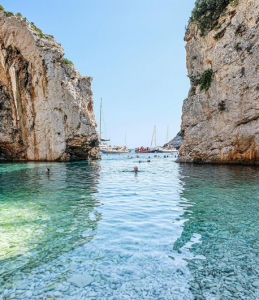
There is much to see in visiting Croatia because the country is accessible whether through air, ship, train, and land vehicles. It has eight well-known national parks, which are protected against pollution and human development. The country’s coastlines are perfect for those who love to experience the sea and do water activities such as diving. Sometimes flotillas of yachts can be seen in the area done and sponsored by some companies to promote the breathtaking coastline stretches of Croatia.
Croatia is rich in art and culture. The city capital Zagreb is a proof of this as it has numerous art galleries and museums where popular exhibits and festivals were being held. It has lots of world-class hotels too with great accommodation for tourists who prefer Croatia as a vacation destination aside from the city’s meeting and convention venues. The Croatian government divided the country into tourist regions to know some popular tourist activities that the guest can do during his or her stay.
Croats are very proud of having the peninsula of Istria. One can find great Roman infrastructures here like Poreč (Euphrasian Basilica) with its striking feature of mosaic and elegant marble colonnades. In the largest city of Istria called Pula, the amazing Arena that is the last of the Roman four side towers amphitheater with its three architectural orders are preserved. Large hotels, camps, resorts and other sports facilities can also be found in this first region. As one of the tourist regions, two of Croatia’s national parks can be found in Kvarner &Highlands. Tourists are able to enjoy great sceneries here with its tall mountains where guests can enjoy overlooking the nearby islands. It also has a virginal nature that nurtures animal species like bears. Though under repair, visitors can still access the central Croatia where they can do a pilgrimage in the Marian shrine in Marija Bristica, view the Lonjsko Polje nature park and see the wonderful cultural architecture of Baroque churches in the area.
There are four tourist cities that can be found in Dalmatia, Croatia. Zadar is known to be the yachting paradise because of its uninhabited islands. The place’s main attraction is Croatia’s national park, the impressive Paklenica karst river canyon. In Šibenik, tourist might find Krka National Park interesting with its waterfalls and nearby religious monasteries. It is also a popular yachting region too. Diocletian’s Palace, which is a Roman unique heritage, can be found in the city of Split. Vineyards and wine are also renowned in this area because of its small town called Primošten. Druvovnik is very famous Croatian region with its various attractive areas like the historical Korčula and the forests of Mljet.
Every nation loves its country and considers it the most beautiful in the world. Croats even call their state “Our Beautiful Homeland”, which is also the title of the national anthem. There are about 4,800,000 people living in Croatia, mostly Catholics.
The capital of Croatia is Zagreb, a city with almost one million inhabitants, which recently celebrated the 900th anniversary of its existence.
Croatia is replete with important cultural and historical monuments, including the ancient amphitheater in Pula, Diocletian’s Palace in Split (a UNESCO world heritage site), a series of Romanesque seaside towns such as Krk, Rab, Pag, Korcula, Trogir and the splendid 13 th century town of Dubrovnik (also protected by UNESCO).
Croatia can also boast about one of the first European the- aters in Hvar, the Euphrasius Basilica in Porec, the pre-Romanesque St. Donatus’ Church in Zadar, the Cathedral in [ibenik and many others.
In the continental part of Croatia, there are about 50 medieval castles and a number of picturesque Baroque towns, such as the famous Varazdin. Croatia is the best-preserved part of the northern Mediterranean, with seven national parks: Plitvice lakes (part of UNESCO’s protected heritage), Paklenica and Risnjak in the continental part of the country, the Kornati archipelago, Brijuni, the Krka waterfalls and the island of Mljet in the coastal part. There are six nature parks as well.
The Adriatic coast with its 1,187 islands is one of the most indented coasts in Europe and one of the most beautiful coasts in the world, with its pebble and sea coves and beaches, its Mediterranean vegetation, its crystal clear sea and unspoiled nature. The average summer temperature is a comfortable 25°C.
The hospitality of the Croatian people will make a visit to Croatia an unforgettable experience.
- Croatia Travel Guide | 26 Things To Know If Visiting Croatia 2019
- 7 Travel Tips for First Timers Traveling to Croatia | HuffPost
- Croatia Travel Tips : Dos and Donts When Visiting Croatia
Main Cities of Croatia
ZAGREB
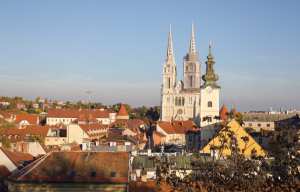
The metropolis of the Croatian spirit was “born” long before 1094, when its name was mentioned in a document for the first time in history. One of the most important years in Zagreb’s history is 1242, when King Bela IV granted Gradec the Golden Bull, actually a charter that gave Zagreb the rights and privileges of a free royal borough.
Zagreb developed on two neighboring hills: Kaptol, the center of spiritual life in northwestern Croatia; and Gradec, a settlement of skilled craftsmen and merchants.
Today Zagreb is a city of one million inhabitants. An abundance of natural resources and its convenient location at an important transit hub resulted in the rapid development of the city’s cultural, spiritual, economic, political and sporting life.
In 1557, Zagreb became the capital of Croatia, so that this year is one of the most important in the city’s history.
Since then, Zagreb has grown larger and more beautiful every day, and a continuous string of important cultural institutions have been established in the city: in 1606 the first Academy was established, while in 1669 the University of Zagreb was founded. Since 1862, railroads have connected Zagreb with the rest of the world. Only four years later, the first Academy of Arts and Sciences in this part of the world was established in Zagreb.
In 1991, after nine hundred years, Croatia finally gained its long-desired state independence.
Accordingly, Zagreb became the capital of the independent Croatia, a state recognized throughout the world, the homeland of Croats living in it and abroad.
SPLIT
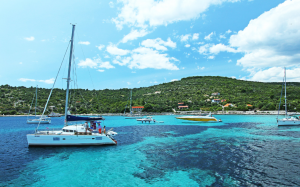
Split emerged from the walls of the palace built by the great Roman emperor, Diocletian, 1700 years ago. Today it is the second largest city in Croatia. The monumental imperial palace, Diocletian’s palace, is the largest monument from Classical Antiquity in Croatia, and probably one of the most significant and best-preserved late Antique monuments in Europe. It is a historical paradox that a structure that was built to be an imperial mausoleum (Diocletian was a fiery persecutor of Christians) in the very heart of the city of Split is today the site of the oldest Catholic cathedral in the world. The Cathedral of St. Doimus, the city’s patron saint, was visited by Pope John Paul II during his stay in Split. The cultural and historical heritage of the city of Split has an inestimable value. The old city center consists of true jewels of the Croatian and Roman cultural heritage: the Peristyle, the Temple of Jupiter and the Vestibule. The city is also surrounded by numerous old Christian churches.
John Paul II was met in Split by approximately 350,000 of the faithful, among them pilgrims from Germany, Italy, Austria, Australia and the United States.
SOLIN
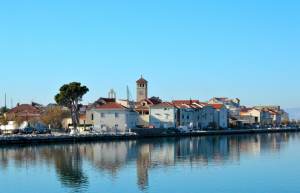
The town of Solin lies in the immediate vicinity of Split. It gets its name from Salona, once the administrative center of the Roman province of Dalmatia. After several attacks by hostile conquerors, the residents of Salona were in large part forced to withdraw to within the walls of Diocletian’s palace. However, over time one of the centers of the early medieval Croatian state began to develop on the outskirts of ancient Salona, the town of Solin.
Only ruins remain on the sites of the ancient city (which had a population of 40,000), and archeologists still have not studied these fully. Because of the exceptionally valuable remains of early Christian architecture found in Salona, its sacral structures are considered vital monuments of general art history.
Solin is also the site of the oldest Croatian Marian shrine: the Church of Our Lady of the Islands.
MARIJA BISTRICA
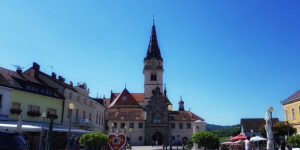
Marija Bistrica is Croatia’s largest national shrine. It has always played a central role among the Croats in the expression of their religious and spiritual devotion to the Blessed Virgin Mary. It is situated in the picturesque Bistrica valley in Hrvatsko Zagorje, just north of Zagreb. Hundreds of thousands of pilgrims visit this shrine every year.
The first statue of the miraculous Mother of God dates to the fifteenth century. It was kept in a chapel on a hill called Vinski vrh. Legend has it that the statue was concealed within the walls of the parish church serveral times during the Ottoman onslaughts. In July 1684, the statue was again discovered and given to the congregation for worship.
In 1971, the Bishops Conference declared Marija Bistrica a Croatian national shrine.
The statue known as Our Lady of Marija Bistrica is black. The story goes that the statue turned black because it caught fire in the past. On the other hand, art historians claim that black statues of the Madonna were made during the fifteenth and sixteenth centuries, inspired by the Old Testament Song of Songs, in which King Solomon praises the beauty of women in Jerusalem, who had dark complexions.
In Marija Bistrica on Saturday, October 3, on the eve of the Feast of St. Francis, His Holiness Pope John Paul II beatified Cardinal Alojzije Stepinac. Cardinal Stepinac was known to have sincerely and deeply revered the Virgin Mary all his life. As a priest, and later as an archbishop and cardinal, he enthusiastically spread and encouraged this veneration, which was instilled in him by his mother Barbara since his earliest childhood. Thus, the beatification in Marija Bistrica was only natural. Almost a half-million pilgrims came to attend the beatification ceremony.
